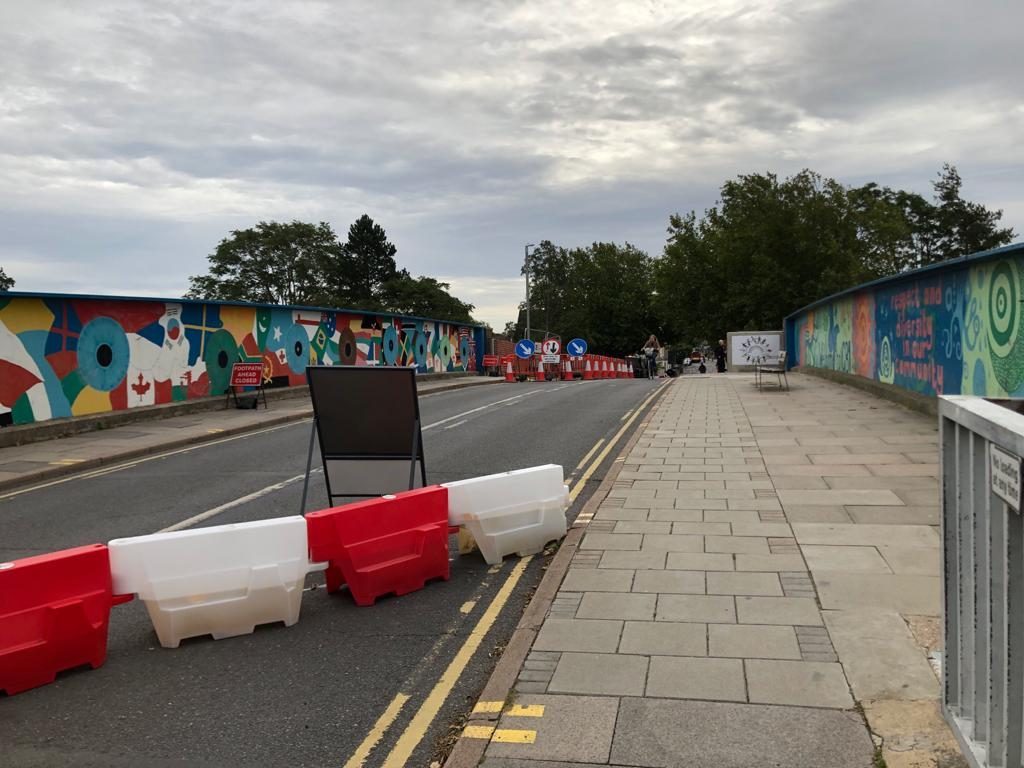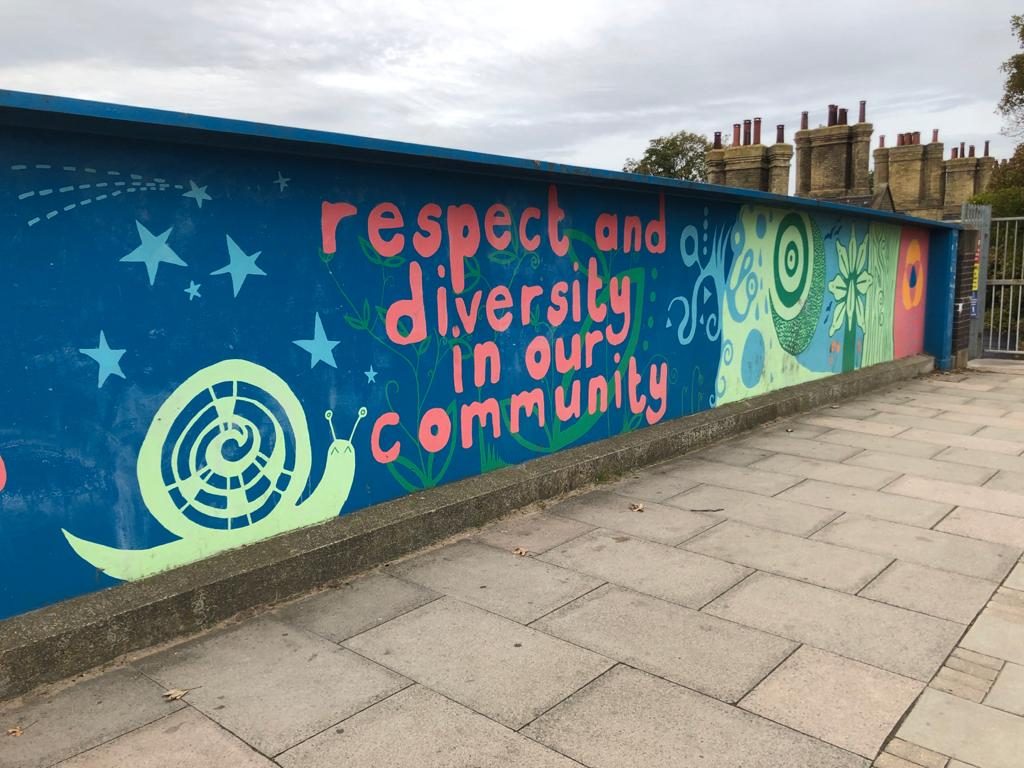Over ten years ago the BBC published a news article describing Mill Road as one of Cambridge’s most culturally diverse areas. In 2020 Mill Road, unlike the rest of Cambridge, is an upmarket mixture of charity shops, cafes, hardware and gardening stores and delicatessens and grocers. The people on the streets are a mix, often young, sometimes old, with a number of shops dedicated to produce from or named after a country from around the world. In summary Mill Road feels like a little bit of London in Cambridge, but not so tense and not so ramshackle and littered.
In 2006 the bridge connecting Mill Road to central Cambridge was painted to celebrate the diversity of the area. One of the key slogans written on the bridge is ‘Respect and Diversity In Our Community’. On one side of the bridge there is a mural dedicated to plants and insects. On the other a collage of flags from different nation states from around the world.





I understand that the collage of flags is taken to mean that people from around the world, no matter what country, are welcome. And that, perhaps too, that it is not acceptable for someone to be nasty to or bully someone, using some aspect of their identity as the basis for that bad behaviour.
However, is a collage of the flags of nation states appropriate for conveying the spirit of respect and diversity?
Take Spain for example. It is a country whose historic identify rests on the expulsion of the Moors and Jews from the country during the middle ages. Furthermore Spain’s constitution makes it illegal for people from different parts of the country to hold a referendum on independence, if it is not agreed by everyone in Spain. Given that the majority of Spaniards, hold to the Spanish identity, this makes it possible for any group of people who want self-determination to achieve it. This includes the Catalans and Basques, groups of people, who are akin to Denmark and Wales in their size. In this way the very the constitution of Spain, forged in 1978 as a compromise between democratic forces, business interests who wanted to attract foreign investment and the controlling impulse of the old politicians from the Francist dictatorship, is a deliberate act of disregard for the diversity of opinion and political preference and identity. This was evidenced when the Catalan government tried to hold a referendum a few years back. The Spanish police made a (sometimes brutal) physical intervention to ensure the referendum didn’t happen and imprisoned many of the elected politicians who tried to make it happen. Should the flag of Spain be used to represent respect for diversity?

Take, as a second example, India and Pakistan. Following the withdrawal from India and Pakistan after the second world war, the borders for India and Pakistan were drawn up on ethnic and religious lines, the assumption being that the different groups would not respect each other’s differences. In India, following its creation, there were attempts made to ethnically cleanse the new country of Muslims, which lead to five million refugees fleeing to Pakistan. Not only that but India is a place where the caste system, a form of racism amongst the different people of India, where certain groups order society and the economy to maintain their dominance over people from other groups, has been in operation for hundreds of years. The last thing that you can expect to experience in India if you are a member of the lower caste is respect. Should the flag of India be used to represent respect and diversity?
But this is not a discussion about the flags about Spain and India in particular. The point is, is that often, inherent to the identify of the nation states represented by the flags in the Cambridge Mill Street mural, is a determination to ensure the cultural primacy of one group of people over another. In China people from the Han majority are orchestrating a mass internment of Uighur people under the Chinese flag; they prohibit the use of Mongolian in the schools of the parts of Mongolia ruled by the Chinese Communist Party. In the United Kingdom the British army cleared the inhabitants of the Indian island of Diego Garcia so it could use the island as an air base.
I could go on…
The key question, which I will reiterate, is whether the use of flags from nation states in murals, to depict respect and diversity, is appropriate?
What of those who see the flag in question as representing oppression, disrespect and a will to impose an identity on that they don’t want or agree with?
Isn’t nation statism, the control of borders, the ability to say ‘no’ to some people entering your territory, the centres and prisons that are used to inter ‘illegal’ immigrants counter to respect and diversity?
Is it possible to reconcile nation statism with respect and diversity?
Possibly, in practice, by using the flags of nation states to communicate respect and diversity, we are unintentionally duping children (and adults) into thinking that achieving respect and diversity is somehow achieved by respecting the integrity and independence of nation states.
It could be that using flags of nation states demonstrates a paucity in understanding of what respect and diversity are, perhaps a delusion that we want to sell to children that we could live in a world where everyone is nice to each other, or perhaps a sub-conscious belief that achieving respect and diversity (whatever those things mean) is practically unachievable.